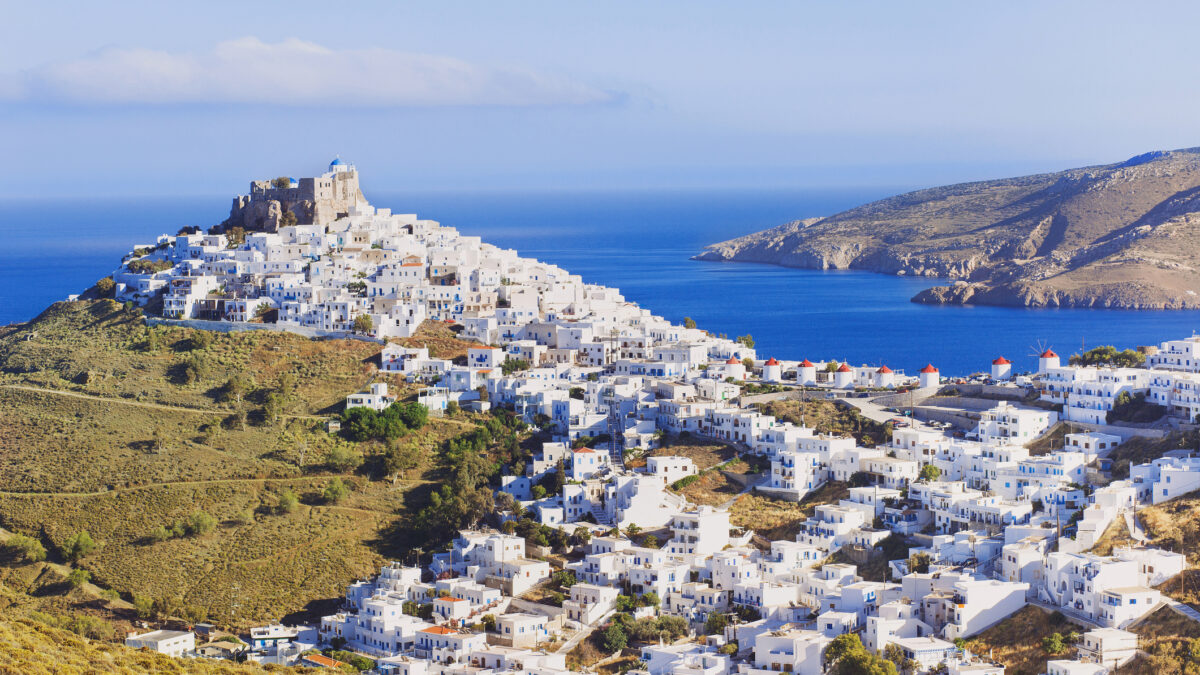Known as the ‘butterfly of the Aegean’, thanks to its unique shape, the island of Astypalaia (or Astropalia to the locals) belongs administratively to the Dodecanese even though it straddles the border between them and the Cyclades. It is precisely this proximity to the Cyclades and their prominent influence that gives the island its special charm.
It is said that Astypalaia took its name – a composite word formed by the Greek words asty, meaning city, and palaios, meaning old – from the Dorians who settled on the island in classical times and found traces of an earlier Phoenician settlement when they arrived. Chora, the island’s main settlement, which extends to Platys Gialos, is a true island jewel, one of Greece’s most strikingly beautiful island destinations. Visitors to the town are sure to be impressed by its whitewashed houses with their blue windows, its windmills and, of course, the Venetian castle that towers above it. The Castle of Astypalaia is a defining landmark of the island’s history. Built by Giovanni Querini, the castle was inhabited continuously until 1943. Visitors to the castle can enjoy striking panoramic views of the Aegean. Inside the castle, you can visit Panagia Portaitissa, widely considered the most impressive church on Astypalaia. Visitors looking to learn about the island’s rich history should not miss the opportunity to visit the local Archaeological Museum at Pera Gyalos.
The beaches of Astypalaia are rugged and rocky, and many are accessible only by boat. Nevertheless, it is worth visiting all the island’s beaches to discover your own favorite. While organized beaches do exist on the island, they are the exception. No matter which beach you choose, though, the local waters are crystal clear and clean everywhere, sure to charm swimmers. Among the most popular beaches is Livadi, and the nearby settlement of the same name attracts major tourist traffic in the summer. Other popular beach destinations with deep, crystal-clear waters are Kaminakia, Plakes and Vatses.
Cuisine
Visitors are sure to be won over by the rich culinary culture of Astypalaia. Lambriatis (which Astypalaia shares with other islands), a dish consisting of local goat stuffed with rice and offal, is one of the island’s most prominent traditional recipes; each year, on August 15, in celebration of the feast of the Dormition of the Theotokos, this dish is served to the public at Panagia Portaitissa. The island also produces exceptional honey, fragrant herbs, and saffron. Visitors should not miss the opportunity to sample the local cheeses, such as chlori – a type of fresh cheese – while pies (such as the famous Lambropita), kouloures and xerotigana are also well worth trying. The island also produces handmade pasta, known as makarounes. Naturally, fish and seafood figure prominently in the island’s cuisine; the local octopus fritters are especially popular. As for sweets, honey dumplings, xerotigana with honey and handmade pasteli are some of the island’s most popular.
How to get there
Astypalaia is an island in the Southeastern Aegean and belongs to the Dodecanese. It is accessible by ferry from the port of Piraeus as well as by direct flight from Athens.










